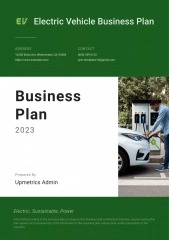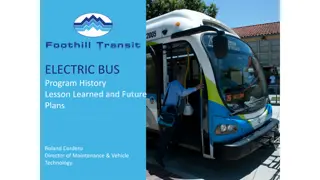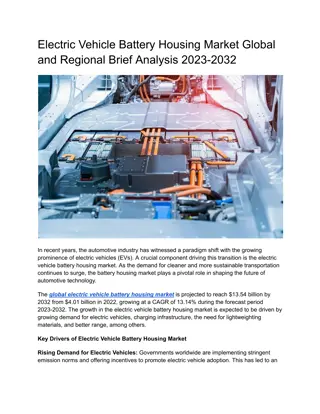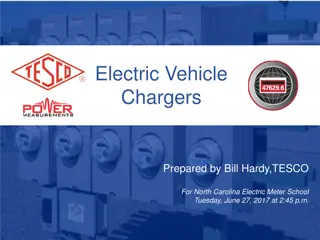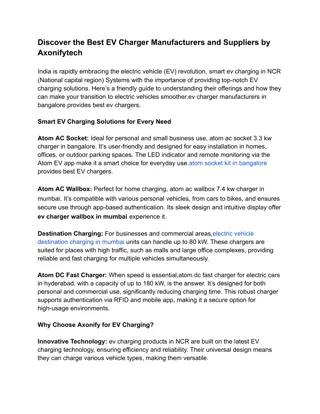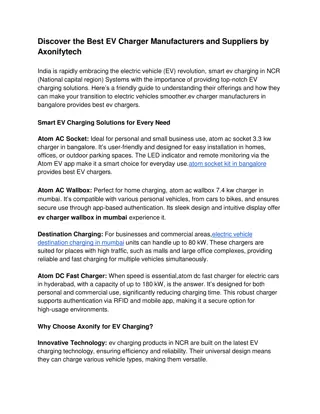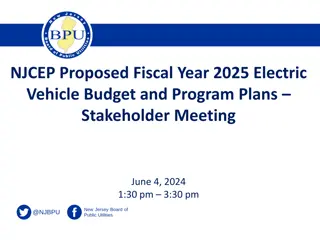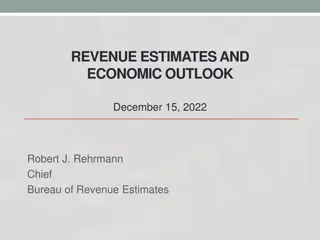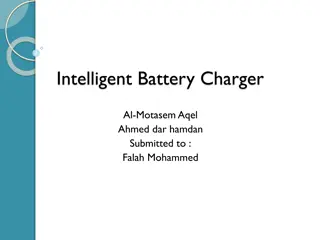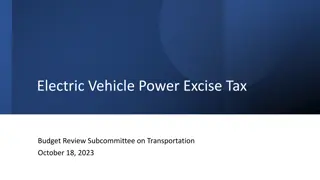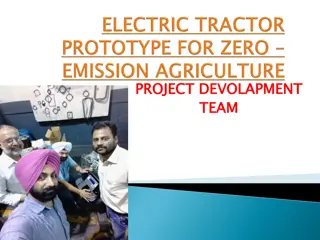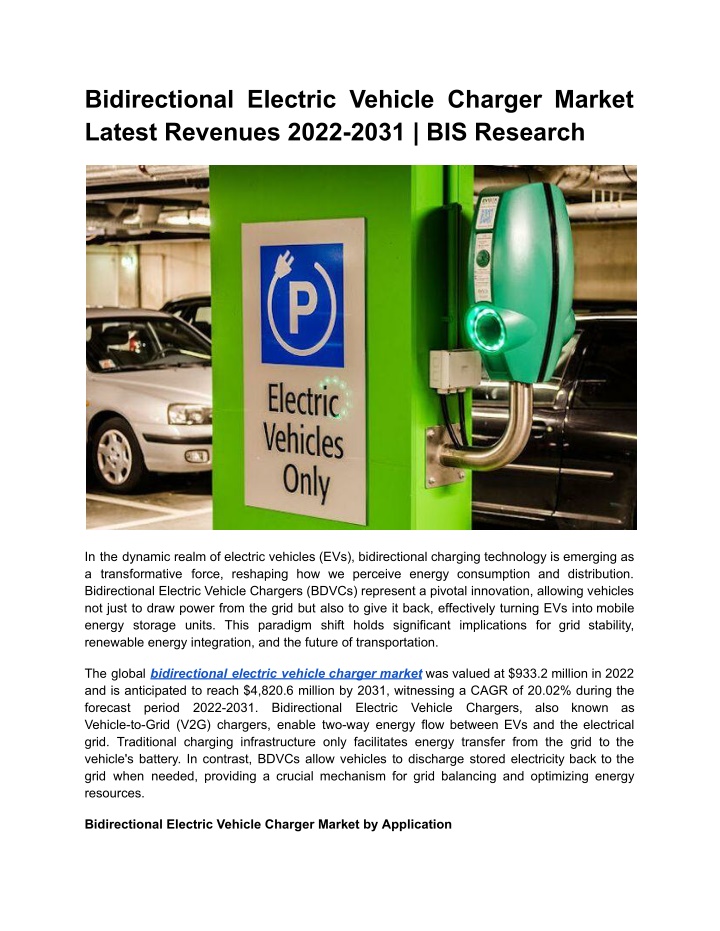
Bidirectional Electric Vehicle Charger Market Latest Revenues
The global bidirectional electric vehicle charger market was valued at $933.2 million in 2022 and is anticipated to reach $4,820.6 million by 2031, witnessing a CAGR of 20.02% during the forecast period 2022-2031.nRead Report Overview: //bisresearch.com/industry-report/bidirectional-electric-vehicle-charger-market.html
Download Presentation

Please find below an Image/Link to download the presentation.
The content on the website is provided AS IS for your information and personal use only. It may not be sold, licensed, or shared on other websites without obtaining consent from the author. If you encounter any issues during the download, it is possible that the publisher has removed the file from their server.
You are allowed to download the files provided on this website for personal or commercial use, subject to the condition that they are used lawfully. All files are the property of their respective owners.
The content on the website is provided AS IS for your information and personal use only. It may not be sold, licensed, or shared on other websites without obtaining consent from the author.
E N D
Presentation Transcript
Bidirectional Electric Vehicle Charger Market Latest Revenues 2022-2031 | BIS Research In the dynamic realm of electric vehicles (EVs), bidirectional charging technology is emerging as a transformative force, reshaping how we perceive energy consumption and distribution. Bidirectional Electric Vehicle Chargers (BDVCs) represent a pivotal innovation, allowing vehicles not just to draw power from the grid but also to give it back, effectively turning EVs into mobile energy storage units. This paradigm shift holds significant implications for grid stability, renewable energy integration, and the future of transportation. The global bidirectional electric vehicle charger market was valued at $933.2 million in 2022 and is anticipated to reach $4,820.6 million by 2031, witnessing a CAGR of 20.02% during the forecast period 2022-2031. Bidirectional Electric Vehicle-to-Grid (V2G) chargers, enable two-way energy flow between EVs and the electrical grid. Traditional charging infrastructure only facilitates energy transfer from the grid to the vehicle's battery. In contrast, BDVCs allow vehicles to discharge stored electricity back to the grid when needed, providing a crucial mechanism for grid balancing and optimizing energy resources. Vehicle Chargers, also known as Bidirectional Electric Vehicle Charger Market by Application
Vehicle-to-Grid (V2G) Vehicle-to-Home (V2H) Others (Vehicle-to-Vehicle and Vehicle-to-Load) Driving Forces Behind the Bidirectional Electric Vehicle Charger Market Growth Several factors are propelling the rapid expansion of the Bidirectional Electric Vehicle Charger market: 1. Grid Resilience and Stability: BDVCs offer grid operators a valuable tool for managing peak demand, frequency regulation, and mitigating the intermittency of renewable energy sources. By leveraging the energy stored in EV batteries during periods of high demand or supply shortages, BDVCs enhance grid stability and resilience. 2. Renewable Energy Integration: The proliferation of renewable energy sources, such as solar and wind, presents challenges related to their intermittent nature. Bidirectional charging enables EVs to store surplus renewable energy during periods of excess generation and discharge it during peak demand, facilitating greater integration of renewables into the grid. 3. Vehicle-to-Home (V2H) Applications: Vehicle-to-Home (V2H) functionality, allowing EV owners to power their homes during outages or peak pricing hours using energy stored in their vehicle batteries. This capability enhances energy resilience at the household level and reduces reliance on traditional backup power sources. 4. Regulatory Support and Incentives: Governments worldwide are implementing policies and incentives to promote the adoption of bidirectional charging technology. These measures include financial incentives, regulatory mandates, and research grants aimed at accelerating the development and deployment of BDVC infrastructure. Beyond grid support, BDVCs enable Request A Free Detailed Sample on Bidirectional Electric Vehicle Charger Market! Market Outlook and Growth Opportunities The Bidirectional Electric Vehicle Charger market is poised for exponential growth in the coming years, driven by increasing EV adoption and the growing recognition of bidirectional charging's potential benefits. Key growth opportunities include: 1. Infrastructure Development: Investments in BDVC infrastructure are essential to support the widespread adoption of bidirectional charging technology. Public and private stakeholders are collaborating to deploy charging stations equipped with bidirectional capabilities across urban centers, highways, and residential areas. 2. Technological Advancements: Ongoing research and development efforts are focused on enhancing the efficiency, interoperability, and scalability of bidirectional charging systems. Innovations in battery technology, power electronics, and communication protocols are expected to drive down costs and improve the performance of BDVCs.
3. Integration with Smart Grids: The convergence of bidirectional charging technology with smart grid solutions offers opportunities for advanced grid management and demand response. Integrating BDVCs with smart meters, energy management systems, and grid analytics enables real-time monitoring and optimization of energy flows, enhancing grid reliability and efficiency. 4. Partnerships and Collaborations: Strategic partnerships between automakers, charging infrastructure providers, utilities, and technology companies are vital for accelerating the adoption of bidirectional charging technology. Collaborative initiatives facilitate standardization, interoperability testing, and market expansion, driving innovation and market growth. Access More: Get Detailed Insights on EV Market Research Reports Conclusion Bidirectional Electric Vehicle Chargers represent a paradigm shift in the electrification of transportation, offering a versatile solution for grid integration, energy management, and resilience. As the market continues to evolve, stakeholders must collaborate to overcome technical, regulatory, and market barriers and unlock the full potential of bidirectional charging technology. By harnessing the power of bidirectional charging, we can build a more sustainable, efficient, and resilient energy ecosystem for future generations.

